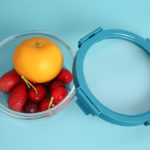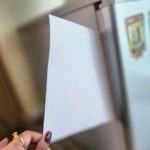Causes of car sunroof leakage
According to automotive experts, despite being luxurious, sunroofs can cause many troubles for users in Vietnam’s tropical weather conditions, especially when they are open.
The causes of leaks on the car sunroof can be due to dirty water channels, dirty drain pipes, or cracked rubber pads. The sunroof has a water channel around the door and 4 water pipes at the four corners of the channel. When the channel is heavily clogged and not cleaned, it can easily cause the drain pipes to be blocked, leading to water overflowing into the ceiling and then into the floor mats, causing a unpleasant odor if not handled in time.
 The hot and humid climate along with the amount of dust in the environment cause the rubber seal of the car sunroof to age and wear out quickly over time.
The hot and humid climate along with the amount of dust in the environment cause the rubber seal of the car sunroof to age and wear out quickly over time.
Here, the rubber seal is the water channel that leads water to the drain pipes on the car, and the accumulated dirt, dust, and leaves can cause the seal to be cracked, preventing water from being drained into the drain pipes and causing water to slowly seep into the car. Light moisture can cause mold on the ceiling, while heavy leakage can cause small amounts of water to seep down.
The most common case when the car sunroof leaks is when the drain pipes on the car are blocked by dirt, leaves, or strange organisms invading and causing blockage in the drain pipes.
Another rare cause is that the sunroof is broken due to being hit by foreign objects that the driver did not notice, causing water to slowly penetrate in.
In terms of structure, all car sunroofs are equipped with small holes to drain rainwater. If the driver forgets to use or maintain them correctly according to the periodic schedule, these small holes can get stuck by large objects or not be cleaned for a long time, causing dirt to accumulate and block them, and water will not have a way to drain and begin to seep into the car. Light moisture can cause moisture on the ceiling, while heavy leakages can cause small amounts of water to seep down.
How to deal with car sunroof leakage
When the sunroof leaks or shows signs of moisture on the roof, the first thing the driver needs to do is to park the car in a dry place and check if the sunroof’s water channel is clogged. If it is, clean it with compressed air or use a small, thin, metal wire to thread into the drain pipe.
Next, twist the wire in two different directions while pushing it inside. Note that do not use wires with sharp ends to avoid damaging the drain pipe system.
Clean the drain pipe by blowing out dirt and debris with compressed air from the bottom of the rubber pad.

When the sunroof leaks, it is necessary to determine the cause for immediate treatment. (Illustrative image).
Regularly observe for cracks or warps along the rubber pad. In reality, after a long period of use, these rubber pads will age and crack due to constantly being exposed to sunlight and rain. Look for areas where the rubber pad is waterlogged or moldy to promptly replace or fix the problem.
The way to handle this condition is to apply a thick layer of liquid electrical tape on the rubber pad to cover all cracks. Then, wait for the liquid to dry and form a waterproof layer, press the tape tightly onto the rubber pad and wait for it to dry completely.
After applying the methods above, close the sunroof and test by pouring water to check. If water still leaks inside, it can be tried again. If the problem of the sunroof being open cannot be resolved, it is best to take the car to reputable repair centers for inspection and timely treatment.
According to VTC



































